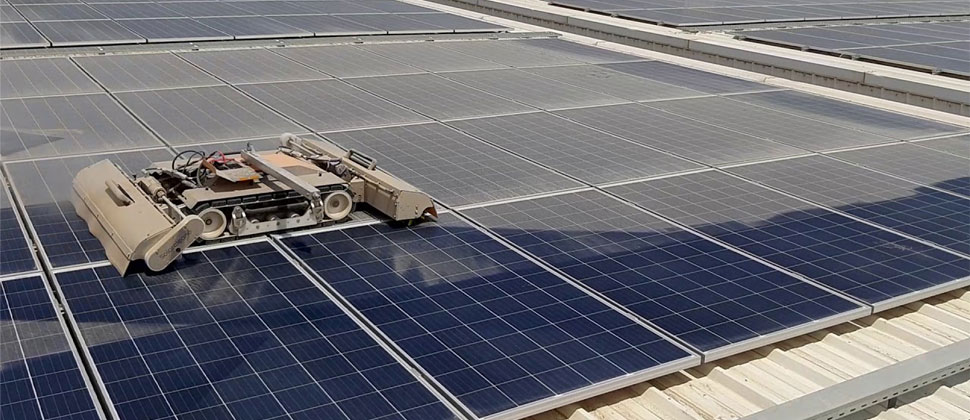-

-

Mail Us

Module Cleaning Techniques
There are three types of solar cleaning technologies available to customers :
- The first method for eliminating dirt is to traditionally wash or wipe it away. A simple clo-th can be used to clean the surface of PV panels for this purpose. This technique needs frequent and repeated procedures and can be extremely labour intensive.
- The second method is semi-automatic cleaning, where solar power projects rely on both robots and manual labour. Semi-au-tomatic systems are deployed for cle-an-ing of solar panels, and robots are tra-ns-ferred manually from one row to another or from one table to another. These systems are best suited for solar panels installed on unlevelled ground, and ta-bles that are not properly aligned and are not in continuity.
- The third method is expected to dominate the market in the near future – a fully au-tonomous solution, with no manual in-ter-ve-ntion. Robotic cleaning gained popu-larity in India in 2019, when the Ministry of New and Renewable Energy released a letter advising the use of minimal water for cleaning utility-scale solar systems. The ministry suggested that solar projects should be cleaned using robotic cleaning equipment, which requires less water, whereas manually cleaning solar panels is dangerous and time-consuming.
Janta Renewable Energy is Manufacture Solar Robot and Provide best cleaning Solution of 1MW to 1GW Scale Solar Power Project.
Advantages of janta renewable energy robotic cleaning systems :
These solar panel cleaning robots preserve solar power production efficiency by keeping solar panels clean without endangering human life. The robotic cleaning solutions are steadily gaining traction, and will get more economical as project sizes in-crea-se. Since the expense of manual labour for panel cleaning rises with the increase in project size, utility-scale developers and so-lar park operators are turning to automa-ted cleaning solutions. Using robots al-so helps reduce water wastage.
Cleaning robots are often symmetrical, and their weight is evenly distributed, whi-ch helps them gain stability on the PV pa-nel. Some existing autonomous robots in the global market are ineffective at cleaning PV panels due to their size.
Sand, construction dust, rocks, bird droppings and traffic emissions, as well as moisture, oil, fog and mist, make up the filthy layer on the PV panel surface. The thickness of the coating can vary depending on the installed set-ups. Thus, the ability to recognise soiling patterns and comprehend the level of soiling should be considered. It must be noted that as robots get more autonomous and precise, their initial cost increases. The power con-su-m-p--tion of cleaning robots varies with the slope of the PV panel, wind speed, and thickness of the soiled layer.
